
The national sanctuary "Nuestra Señora de Coromoto", patron saint of Venezuela, is located in the Portuguese state, 25 kilometers from the state capital and 447 km from the city of Caracas. Since 2007 it is considered as "Minor Basilica". It is stated that in this place the Virgin appeared to the Indian Coromoto for the second time, 350 years ago, for this reason this place was chosen for the construction of the sanctuary.
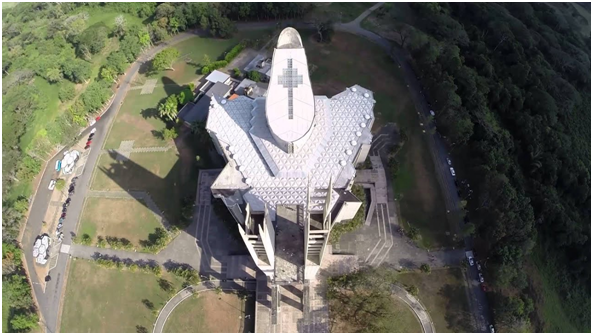
The author of the work is the architect Erasmo Calvani, who had the collaboration of the Spanish-Venezuelan architect Juan Capdevila Elías. The original plans of the work date from 1975, although it was not until 1980 when it began to be executed. For reasons not worth noting here, the basilica was inaugurated and blessed by John Paul II 16 years after its construction began. The religious ceremony was attended by a crowd of parishioners that exceeded two million people.
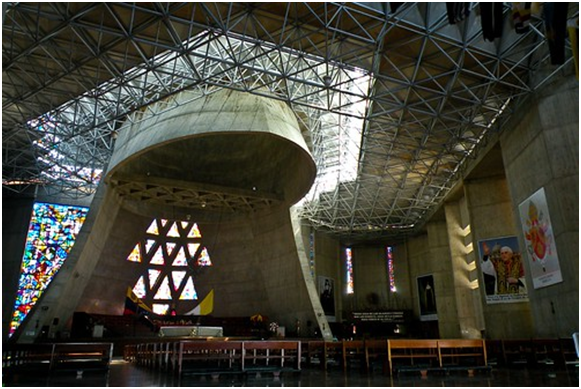
The church was built entirely in reinforced concrete in clean work, its height varies between 76 and 68 meters. Its structure, considered unique in the world, has the shape of an elliptical double hyperboloid, also known as a “dome”. It has two parallel towers of approximately 80 meters high, with the dome of about 54 meters. In the ambulatory are the stained glass windows of the artist Guillermo Márquez, who developed a new system of assemblies in concrete nerves, where the story of the Virgin is represented from her appearance to the moment of her coronation.

Inside the basilica there are three altars, two lateral ones (The one of the Santísimo Sacramento and the San Juan Bautista) and the central one, or Altar Mayor, in the shape of a hut, where the image of the Virgin of Coromoto is located. It keeps the image given by the Virgin to the Indian, according to the Venezuelan Catholic religious tradition. The main altar, in addition to the shape of a hut, ends in a tubular opening, which resembles, from the inside, the papal miter, but suggests the shape of a ship from outside the church. Above the altar you can see a fabulous stained glass cross, which measures 110 m2 and is part of the 400 meters of stained glass that the Basilica has, representing virgins, saints and Christian figures that give great color to the sacred enclosure.
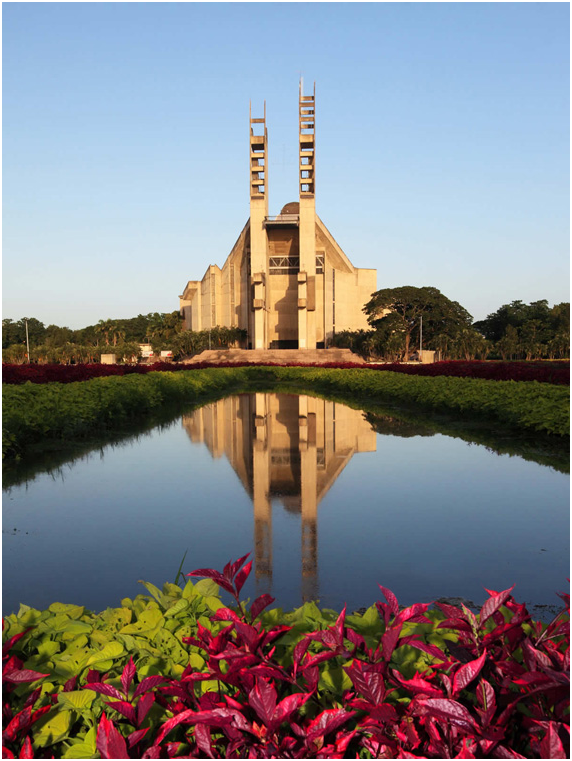
The structure is slightly smaller than St. Peter's Basilica in the Vatican and more modern than the Basilica of Our Lady of Guadalupe in Mexico. It is considered the second most important after the Basilica of Our Lady Aparecida in Brazil. It has a capacity for 2,500 people and more than 50,000 people can attend the Plaza de Espigas in the vicinity of the church.
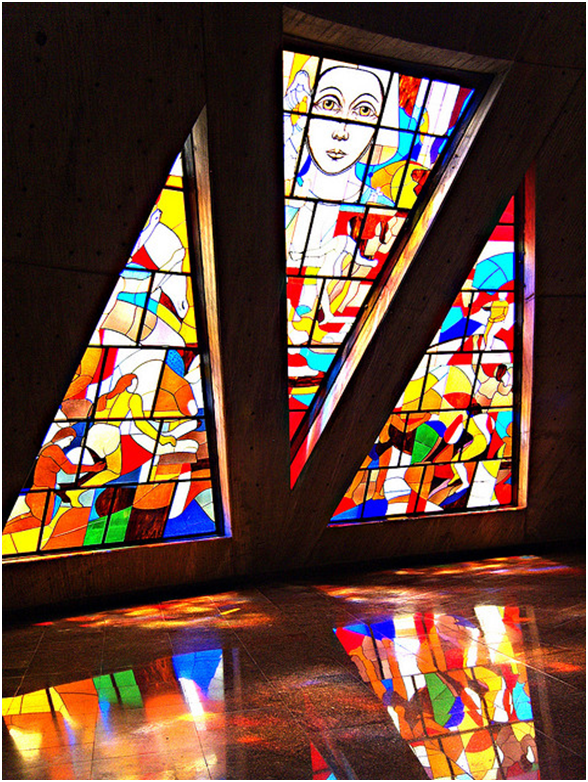
Below the Sanctuary is the crypt, with an area of 3500 m2, where minor chapels, a conference room and iconographic museums operate. Around it you can see lagoons and gardens. It was necessary to build a parking lot that can accommodate about six hundred vehicles. The temple was erected on a very large and beautiful site with a viewpoint located on the outside.
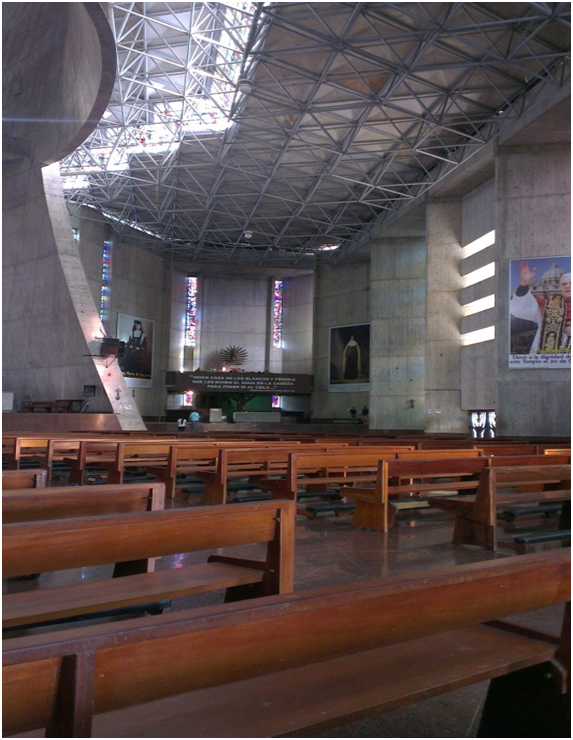
In the highest tower of the temple, approximately 75 m high, there is a viewpoint from where you can see the city of Guanare and part of the Andes mountain range, and on certain days you can see the reflections of the catatumbo lightning. To get to the viewpoint, the building has an elevator or, for the more daring, you can go up some stairs that reach the top. On the other hand, the basilica is adorned on the outside with artificial lagoons that reflect the structure of the church.
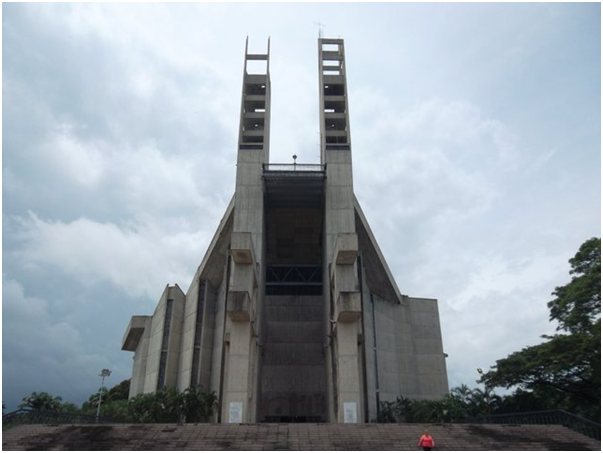
Image
References:
I.- Santuario Nacional Nuestra Señora de Coromoto:
https://guiaviajesvirtual.com/index_venezuela.php?recharge=religioso_coromoto
II.- El Santuario Nacional Nuestra Señora de Coromoto:
https://www.ivenezuela.travel/santuario-nacional-nuestra-senora-de-coromoto/
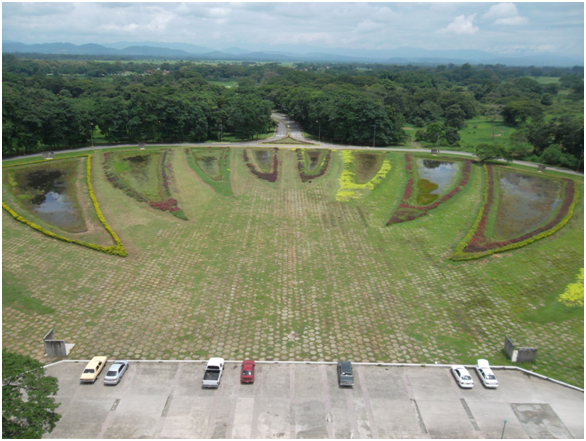
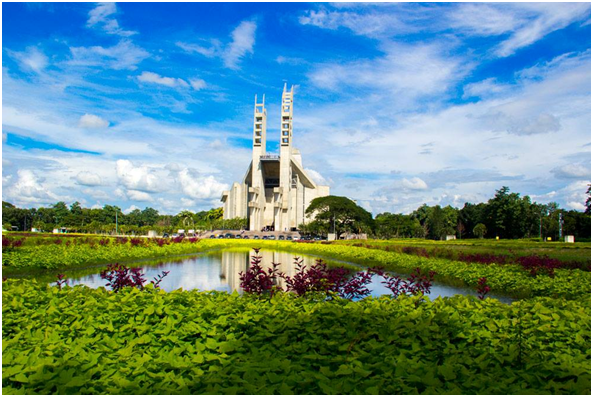
El santuario nacional “Nuestra Señora de Coromoto”, patrona de Venezuela, está ubicado en el estado Portuguesa, a 25 kilómetros de la capital del Estado y a 447 km de la ciudad de Caracas. Desde 2007 es considerado como “Basílica Menor”. Se afirma que en este lugar se le apareció la Virgen al indio Coromoto por segunda vez, hace 350 años, por ello se escogió este lugar para la construcción del santuario.
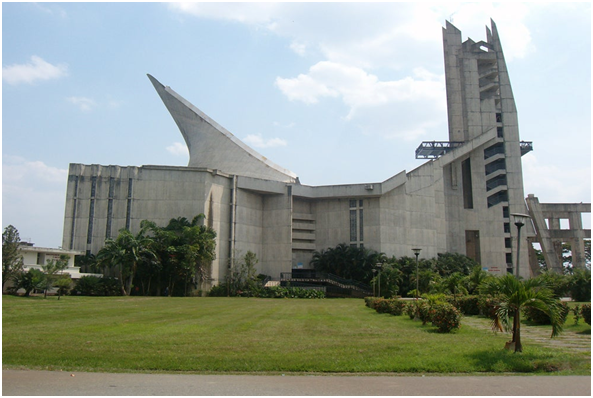
El autor de la obra es el arquitecto Erasmo Calvani, quien contó con la colaboración del arquitecto hispano-venezolano Juan Capdevila Elías. Los planos originales de la obra datan de 1975, aunque no fue sino en 1980 cuando se comenzó a ejecutar la misma. Por razones que no vale la pena señalar aquí, la basílica fue inaugurada y bendecida por Juan Pablo II 16 años después del inicio de su construcción. La ceremonia religiosa contó con la presencia de una multitud de feligreses que superaba los dos millones de personas.
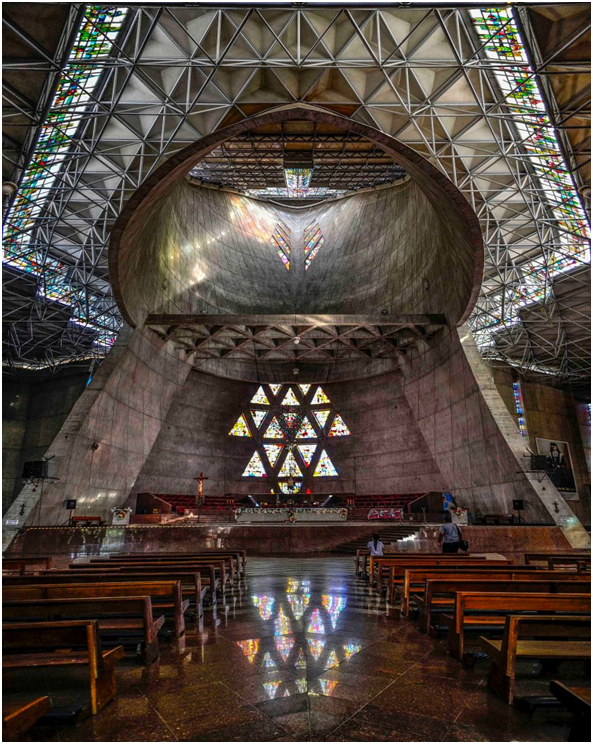
La iglesia fue construida totalmente en concreto armado en obra limpia, su altura varía entre 76 y 68 metros. Su estructura, considerada única en el mundo, tiene la forma de doble hiperboloide elíptico, conocida también como “cimborrio”. Cuenta con dos torres paralelas de aproximadamente 80 metros de altura, con el cimborrio (especie de cúpula) de unos 54 metros. En la girola se encuentran los vitrales del artista Guillermo Márquez, quien desarrolló un sistema nuevo de montajes en nervios de concreto, en donde se representa la historia de la Virgen desde su aparición hasta el momento de la coronación.
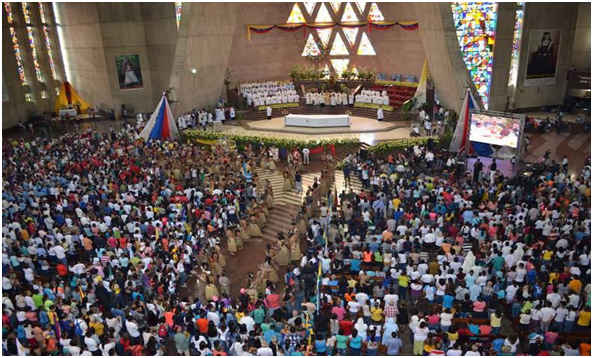
(En Venezuela el fervor por la Virgen de Coromoto es tradición) Image
En el interior de la basílica se encuentran tres altares, dos laterales (El del Santísimo Sacramento y el San Juan Bautista) y el central, o Altar Mayor, en forma de bohío, donde se ubica la imagen de la Virgen de Coromoto, allí se guarda la imagen dada por la Virgen al indio, según narra la tradición religiosa católica venezolana. El altar mayor, además de la forma de bohío, termina en una apertura tubular, que semeja, desde adentro, la mitra papal, pero sugiere la forma de un barco desde afuera de la iglesia. Encima del altar se puede apreciar una fabulosa cruz de vitral, la cual mide 110 m2 y forma parte de los 400 metros de vitrales con lo que cuenta la Basílica, representando vírgenes, santos y figuras cristianas que le dan gran colorido al sagrado recinto.

La estructura es un poco más pequeña que la Basílica de San Pedro en el Vaticano y es más moderna que la Basílica de Nuestra Señora de Guadalupe en México. Se le considera la segunda en importancia después de la Basílica de Nuestra Señora Aparecida en Brasil. Tiene una capacidad para 2.500 personas y más de 50.000 personas pueden asistir a la Plaza de Espigas en los alrededores de la iglesia.
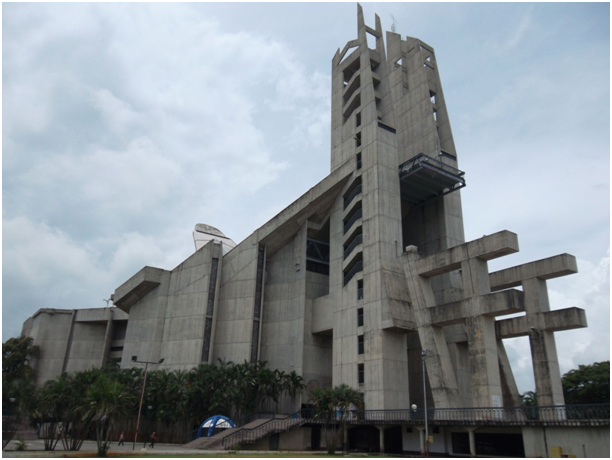
Image
Debajo del Santuario se encuentra la cripta, con una superficie de 3500 mts2, donde funcionan capillas menores, sala de conferencias y museos iconográficos. A su alrededor se observan lagunas y jardines. Fue necesario construir un estacionamiento que tiene capacidad para unos seiscientos vehículos. El templo fue erigido en un terreno muy amplio y hermoso con un mirador ubicado en la parte exterior.
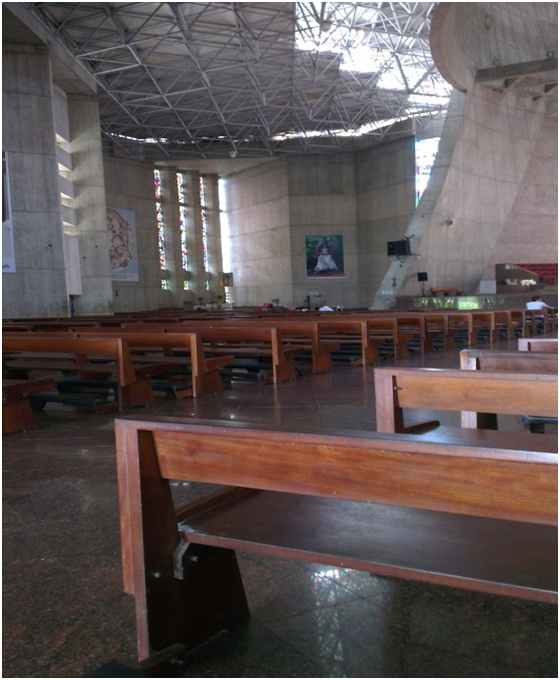
Image
En la torre mas alta del templo, de aproximadamente 75 m de altura, se encuentra un mirador desde dónde se puede ver la ciudad de Guanare y parte de la cordillera de los Andes, y en ciertos días se pueden ver los reflejos del relámpago del catatumbo; para llegar al mirador la edificación cuenta con un ascensor o, para los más osados, se puede subir por unas escaleras que llegan hasta el tope. Por otra parte, la basílica está adornada en su exterior con lagunas artificiales que reflejan la estructura de la iglesia.
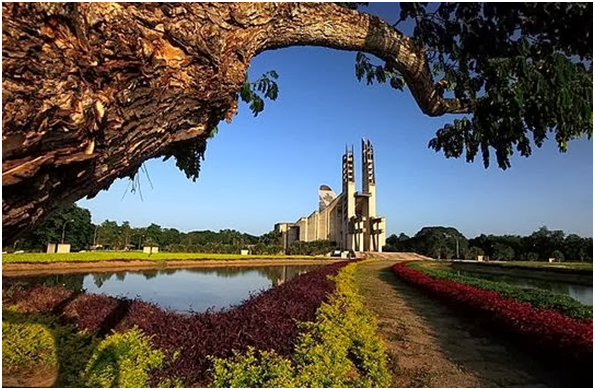
Image
Referencias:
I.- Santuario Nacional Nuestra Señora de Coromoto:
https://guiaviajesvirtual.com/index_venezuela.php?recharge=religioso_coromoto
II.- El Santuario Nacional Nuestra Señora de Coromoto:
https://www.ivenezuela.travel/santuario-nacional-nuestra-senora-de-coromoto/
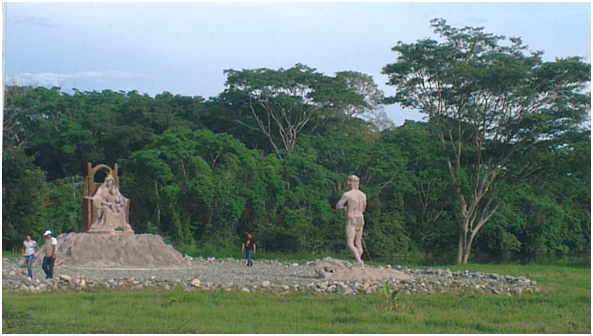
Image

(A la entrada del templo se puede ver una representación de los indígenas adorando a la Virgen)
Image
I have always wanted to know this work, it is a beauty, of impressive architecture,
Hello @doriangel. Kindly provide/include the English language translation to your comment. Thank you for your consideration.
Thank you very much for your comment, I completely forgot, it won't happen again.
Congratulations, your post has been added to Pinmapple! 🎉🥳🍍
Did you know you have your own profile map?
And every post has their own map too!
Want to have your post on the map too?
Thanks friends of pinmapple. I hope to continue counting on you in this adventure of the architecture of Venezuela and the world.
This is one of the most unique shrine that I have seen (in photos) especially the interior and the addition of a color glass. Amazing!
Hello dear afterglow. In fact, this chapel in honor of the patron saint of the country has characteristics that make it, if not unique, very special in the world of religious architecture. Thank you for your comment.
You're welcome (^_^)
Oh wow! That national sanctuary is definitely an eye-catcher! Just look at its massive central pinnacle - so attractive that it easily catches our immediate attention. Isn't that a glorious sight? Its Brutalist-inspired architecture, evident in the untreated concrete facade applied on its exposed surfaces, geometrical patterns, and other architectural elements also possess a unique design appeal that would mesmerize churchgoers. That spectacular shrine has a design statement of its own, no doubt, and is indeed a worthy emblem of Venezuela's patron saint. Splendid publication Benjamin!
Hello friend Erne, when I had the opportunity to visit the Shrine, several years ago, I was impressed by its beauty and the special shape and design, with respect to the churches that I have known in my travels through Europe and the Americas. It looks like a basilica isolated from the city, which helps to feel an atmosphere of peace and tranquility from the moment you are in the place; what makes it a bit different from the churches found in the heart of any city. Thank you for your wise comments.
Having seen the outside from the opening image the building looked intriguing and beautiful in the use of curvatures. Once scrolling through the images and witnessing the interior and the set up of the alter and the beautifully aligned stain glass windows. WoW! It is definitely a unique building. I can't say I have ever seen something like this.
Beautiful
Dear melbourneswest, I find your description of the Sanctuary as a unique building, very interesting, which beside I share. It also seemed to me of singular beauty and paradigmatic structure in the field of religious architecture when I was there, for the first time, several years ago. Have a happy week.
Well done @besamu! We're happy to inform you that this publication was specially curated and awarded BRONZE MARK in Architecture Brew #38. Congratulations!
Subscribe to Architecture+Design, an OCD incubated community on the Hive blockchain.
Good morning, dear sirs of aplusd. Thank you very much for having specially curated and awarded BRONZE MARK my post in Architecture Brew # 38. I appreciate the consideration.
You're most welcome @besamu. Keep up the remarkable posts! Cheers!